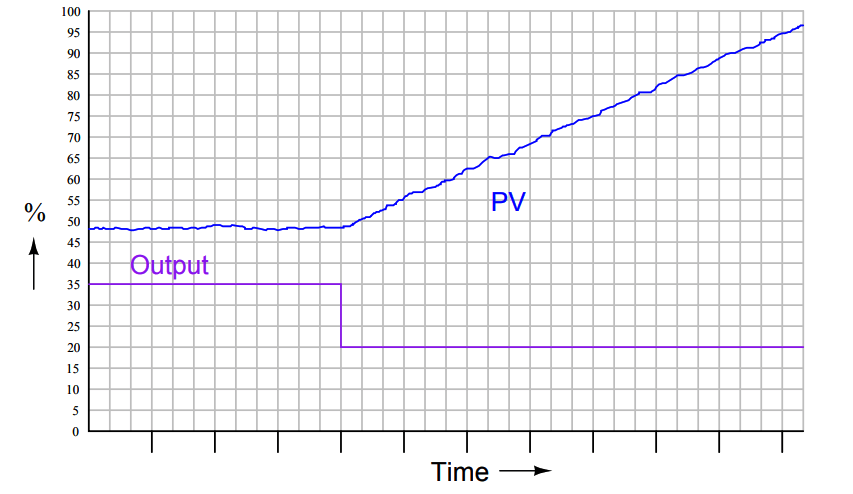Top PID Controller Multiple Choice Questions and answers for industrial automation engineers and control system engineers.
Question 1
(A) Temperature, Flow
(B) Flow, Level
(C) pH, Temperature
(D) Level, Temperature
(E) Level, Flow
Answer : A
Question 2
(A) Integrating, Derivative
(B) Integrating, Feedforward
(C) Self-regulating, Proportional
(D) Runaway, Linear
(E) Self-regulating, Integral
Answer : E
Question 3
(A) Reset
(B) Percent
(C) Minutes per repeat
(D) Gain
(E) Rate
Answer : D
Question 4
(A) a condition of good control where PV approaches SP without overshoot
(B) a condition of poor control where oscillations continue at constant amplitude
(C) a condition of poor control where the transmitter is damped by 25%
(D) a condition of good control where oscillations quickly subside
(E) a condition of excellent control where there are no oscillations
Answer : D
Question 5
(A) percent
(B) seconds per rate
(C) minutes
(D) time constant ratio (unitless)
(E) repeats per minute
Answer : E
Question 6
(A) 175
(B) 0.756
(C) 0.571
(D) 1.32
(E) 1.75
Answer : C
Question 7

(A) Integrating
(B) Proportional
(C) Linear
(D) Direct-acting
(E) Self-regulating
Answer : A
Question 8
(A) self-bias
(B) wind-up
(C) repeat
(D) noise
(E) offset
Answer : B
Question 9
(A) Nonlinear
(B) Derivative
(C) Proportional
(D) Reset
(E) Gain
Answer : D
Question 10
(A) to dampen noise
(B) only on integrating processes
(C) to improve response time
(D) only on self-regulating processes
(E) never
Answer : A
Credits : by Tony R. Kuphaldt
Learn an example PLC program to control a pump based on level sensors using ladder…
In the PLC timer application for security camera recording, when motion is detected then camera…
In this example, we will learn batch mixing with PLC ladder logic program using timer…
This PLC example on manufacturing line assembly is an intermediate-level PLC program prepared for the…
In this article, you will learn the PLC programming example with pushbutton and motor control…
This article teaches how to convert Boolean logic to PLC programming ladder logic with the…